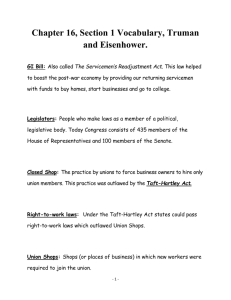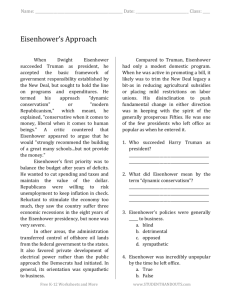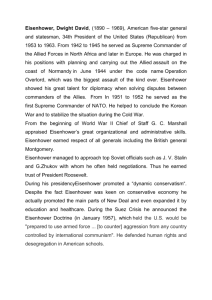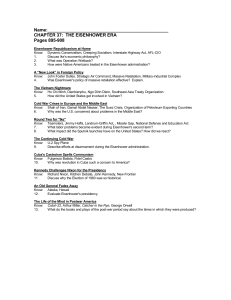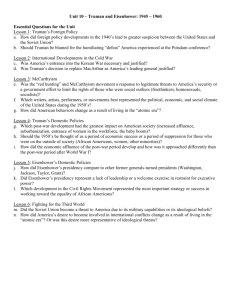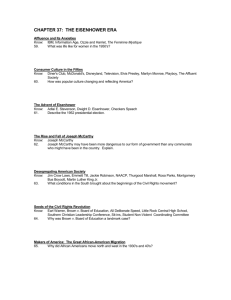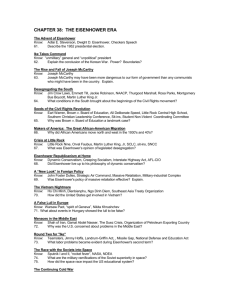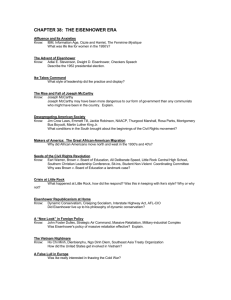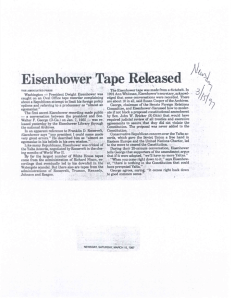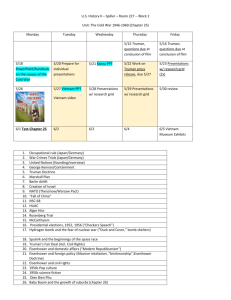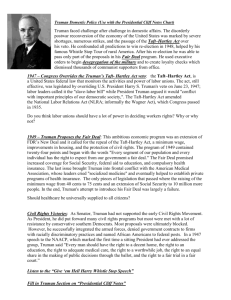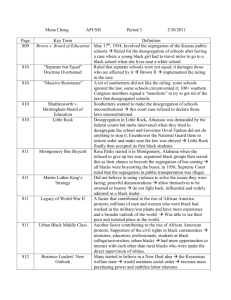AMH Chapter 16 Section 1
advertisement
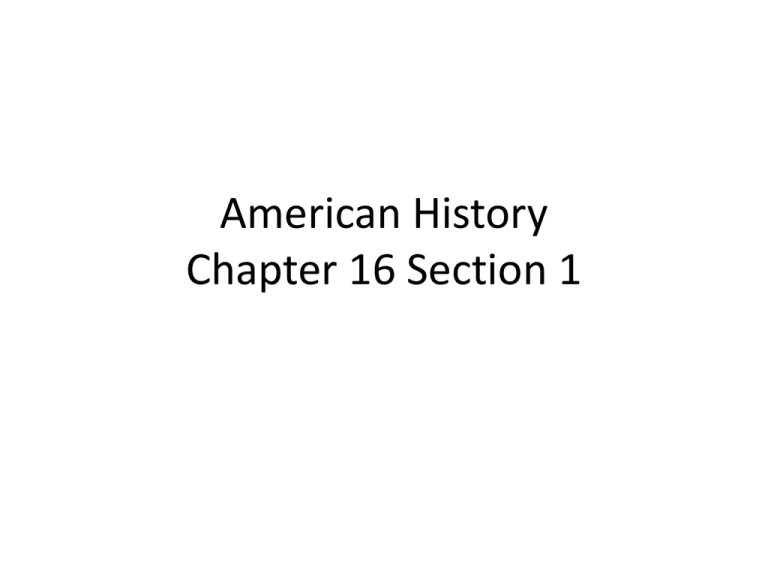
American History Chapter 16 Section 1 Post-War Economy • After the war, many Americans worried that as military production stopped and millions of former soldiers flooded the labor market, unemployment and recession might sweep the country. Post-War Economy • Instead, Americans who had lived with shortages during the war helped to grow the economy after the war by buying consumer goods. • Demand for goods led to higher prices and inflation, triggering labor unrest and strikes in the automobile, electric steel and mining industries. • President Truman tried to prevent energy shortages and railroad strikes by forcing miners and others back to work. Republicans taking over Congress • Labor unrest and inflation led to a change in leadership. • In the 1946 elections, the Republicans took control of both houses of Congress. Taft-Hartley Act • To decrease the power of unions, the new Congress proposed the Taft-Hartley Act. • The Taft-Hartley Act outlawed the practice of forcing employers to hire only union workers. • The act of forcing a business to hire only union workers is known as a closed shop. • It allowed states to pass rightto-work laws to outlaw union shops in which workers were forced to join unions. More on the Taft-Hartley Act • The law also prohibited featherbedding, or limiting output in order to create more jobs. • President Truman vetoed the bill, but Congress passed the act in 1947 over his veto. • Labor leaders claimed the law ended many of the gains unions made since 1933. Election of 1952 • In 1952, Dwight Eisenhower ran as the Republicans nominee for president. • Eisenhower was a war hero (General of the Allied forces during World War II). • Eisenhower was very popular and went by the name “Ike.” • He easily won the election against Democrat Adlai Stevenson. Dynamic Conservatism • President Eisenhower believed in dynamic conservatism. • This was a balance of conservative economics and social activism. • The president made many conservative decisions. • He chose business leaders for his cabinet and stopped government price controls. • Shortly after taking office, Eisenhower abolished the Reconstruction Finance Corporation, which, since 1932, had lent money to banks, railroads, and other institutions. • Furthermore, he halted aid to businesses, schools, and public housing. Extending Social Security • Although he cut federal spending, Eisenhower continued the New Deal by extending Social Security benefits and unemployment compensation to more Americans. Additionally, Eisenhower increased the minimum wage. Federal Highway Act • Eisenhower’s programs also helped farmers and people without jobs. He pushed for public works projects. • In 1956, Congress passed the Federal Highway Act, which granted $25 billion to build over 40,000 miles of interstate highways. • These programs helped him win a second term in 1956.
